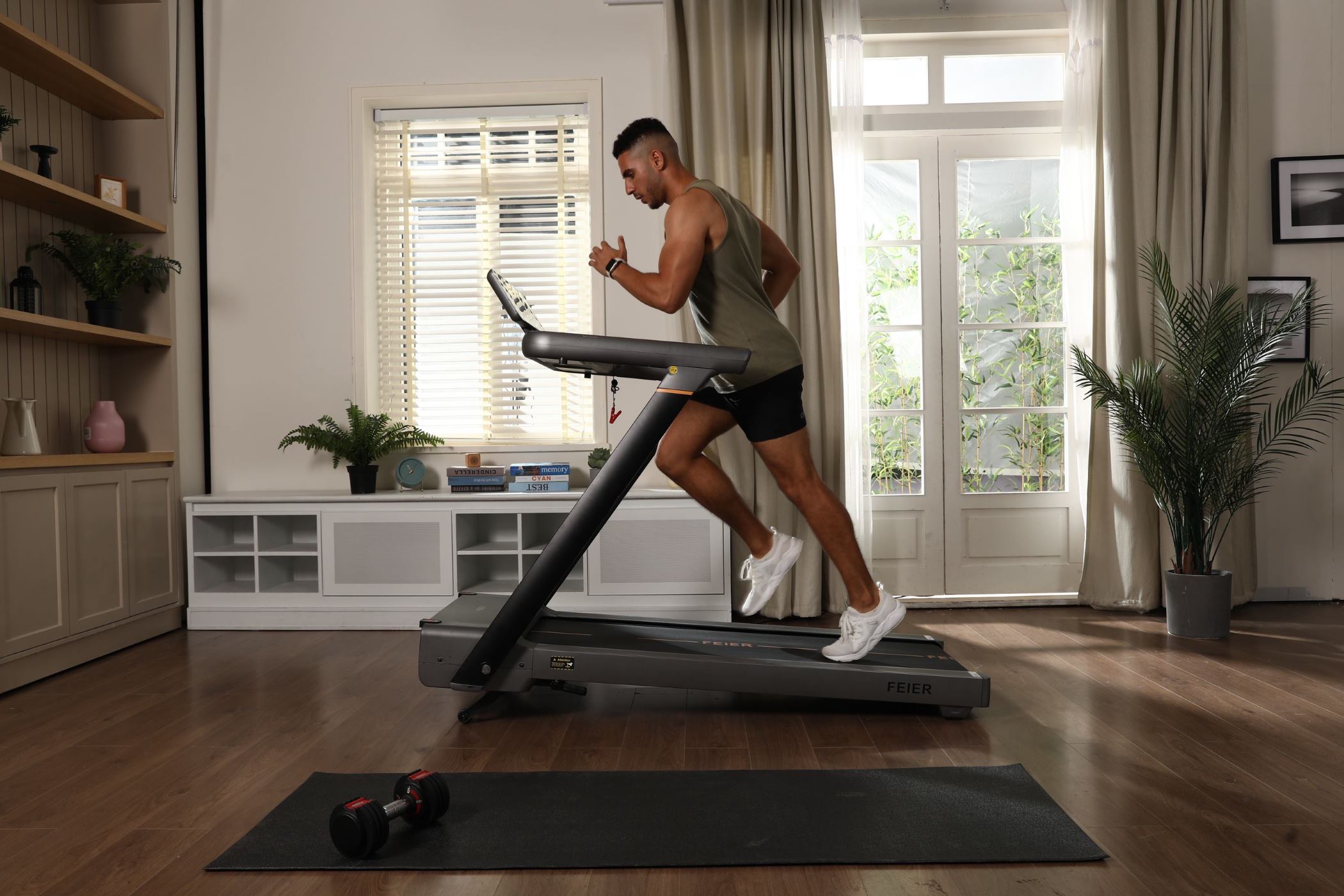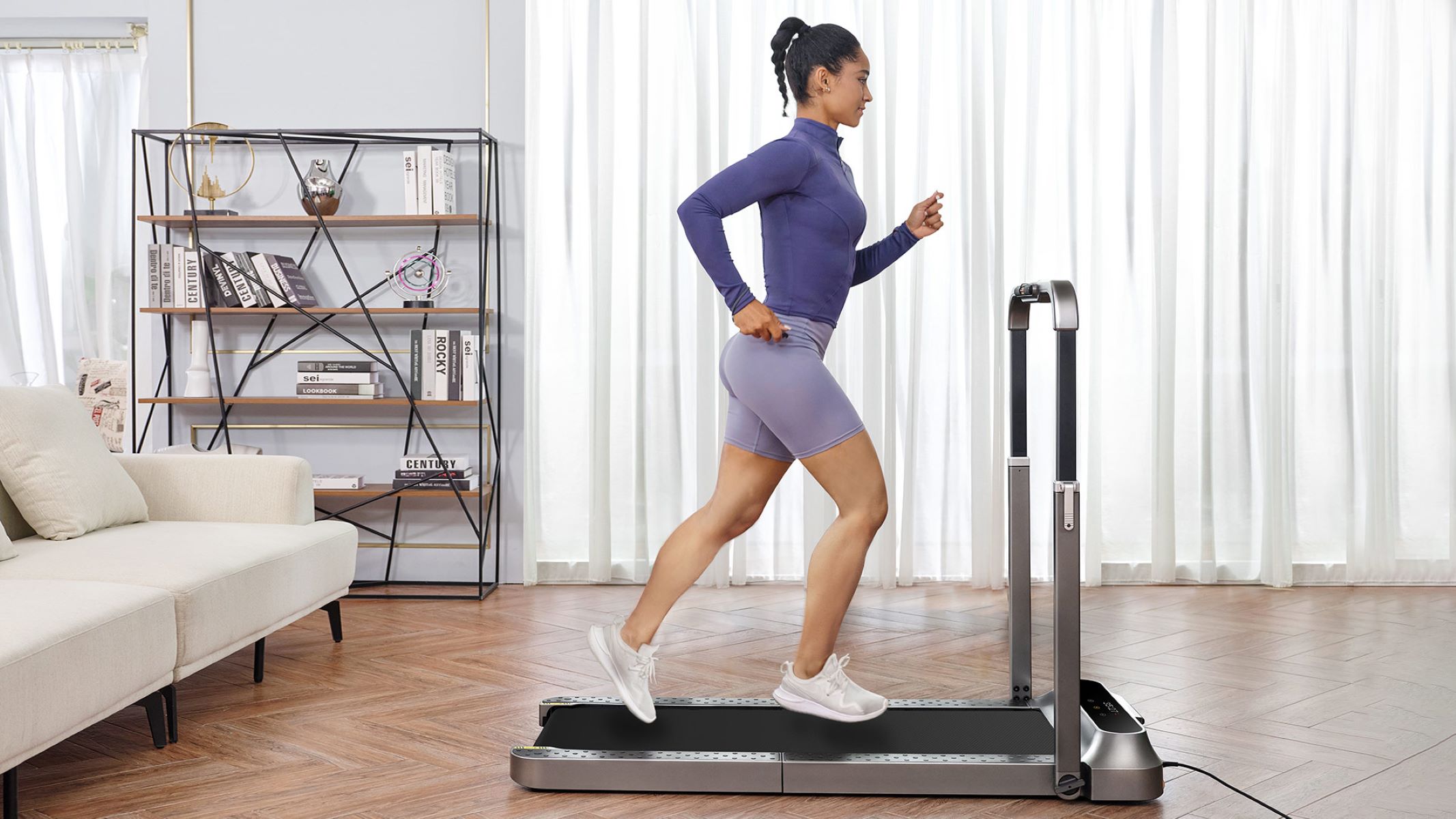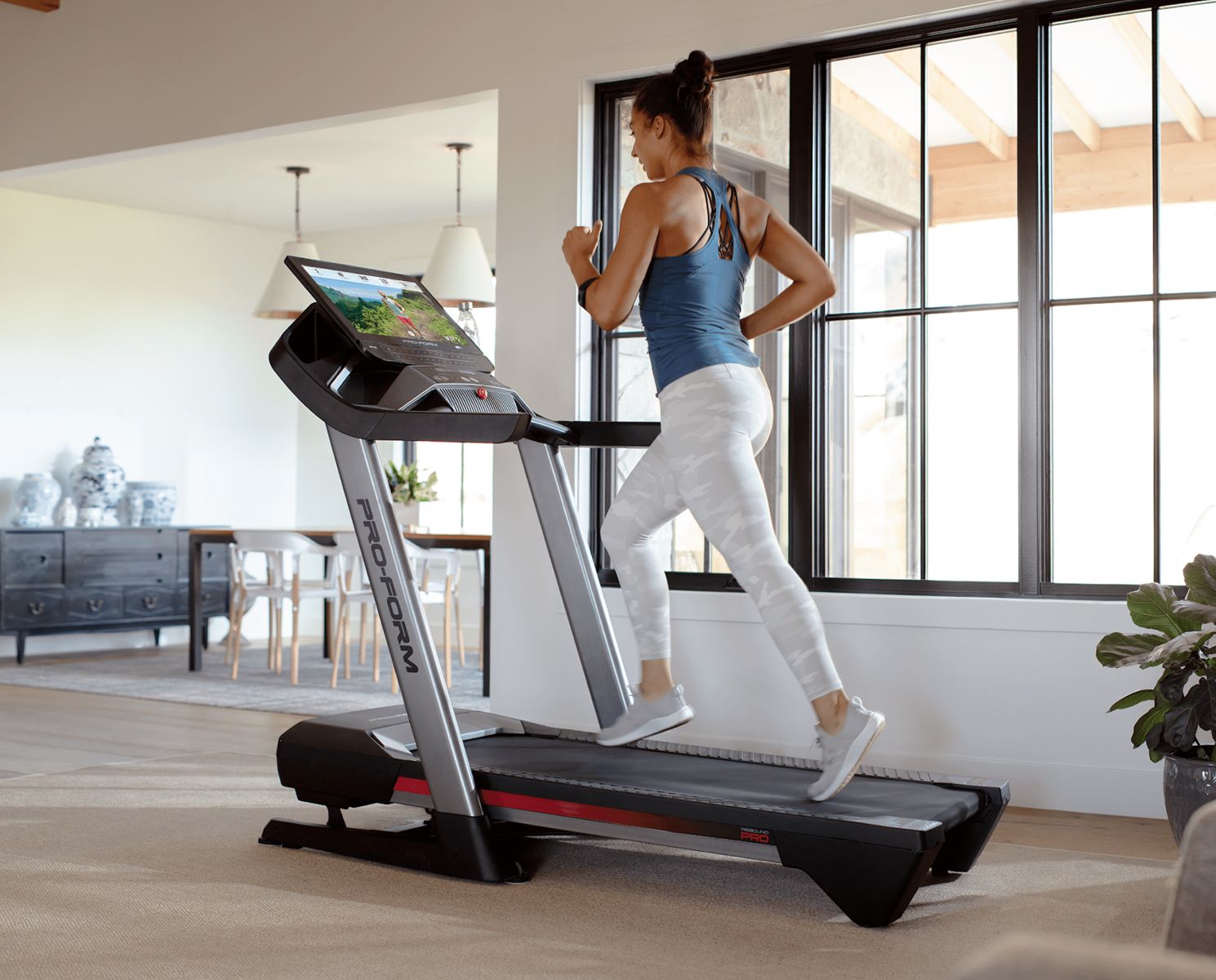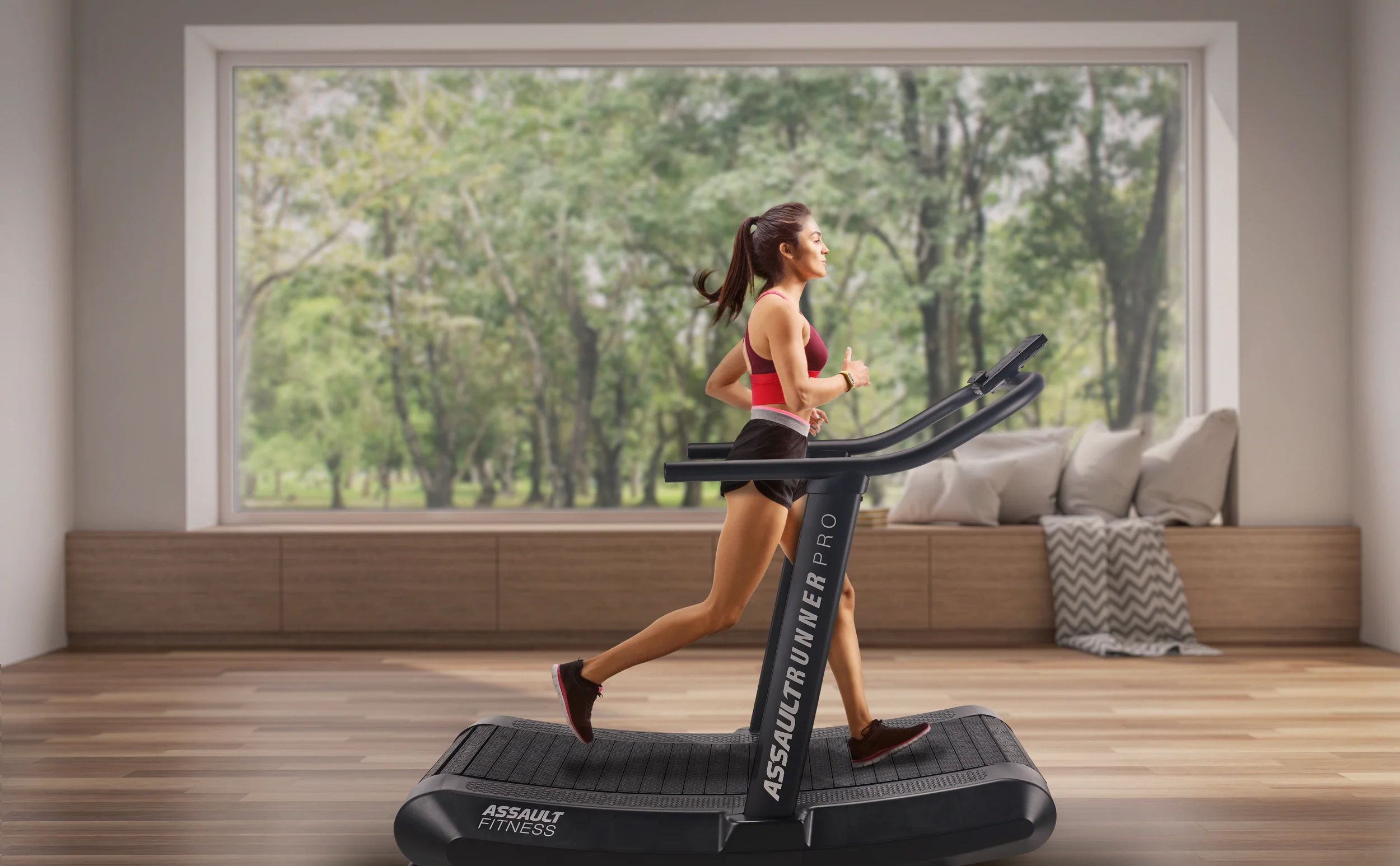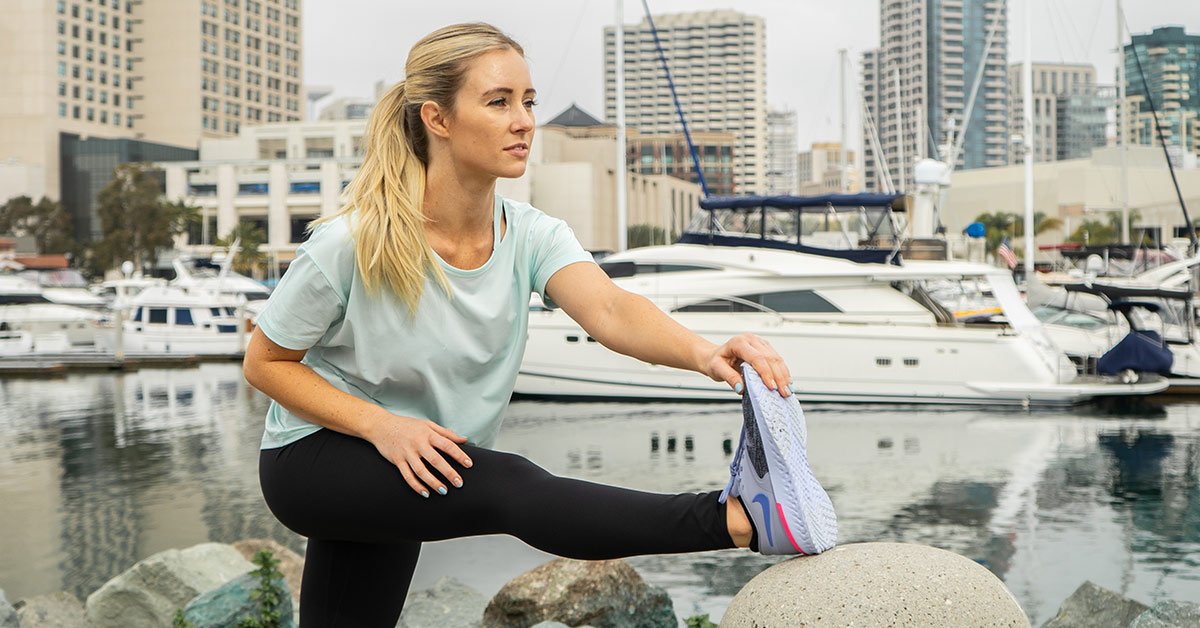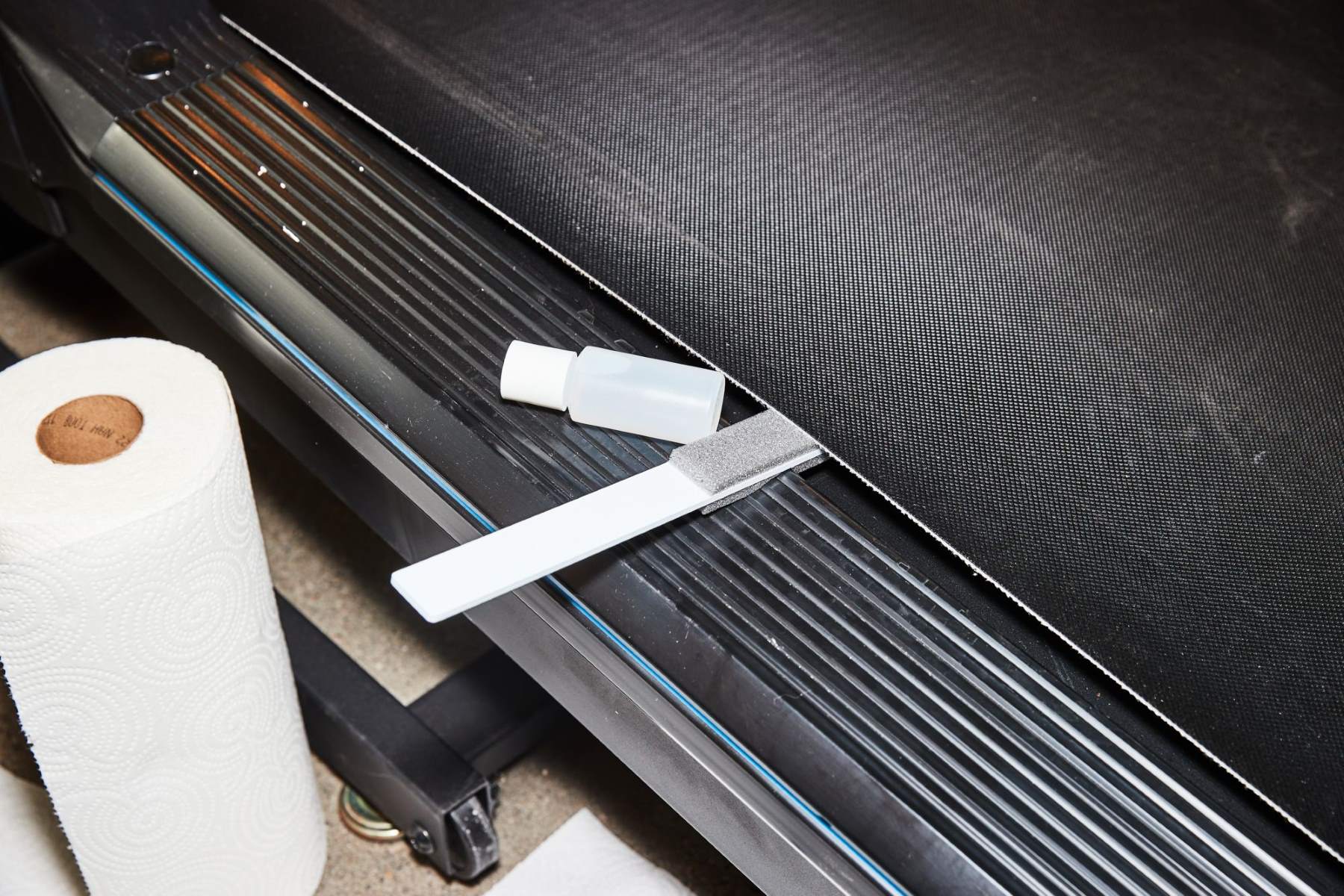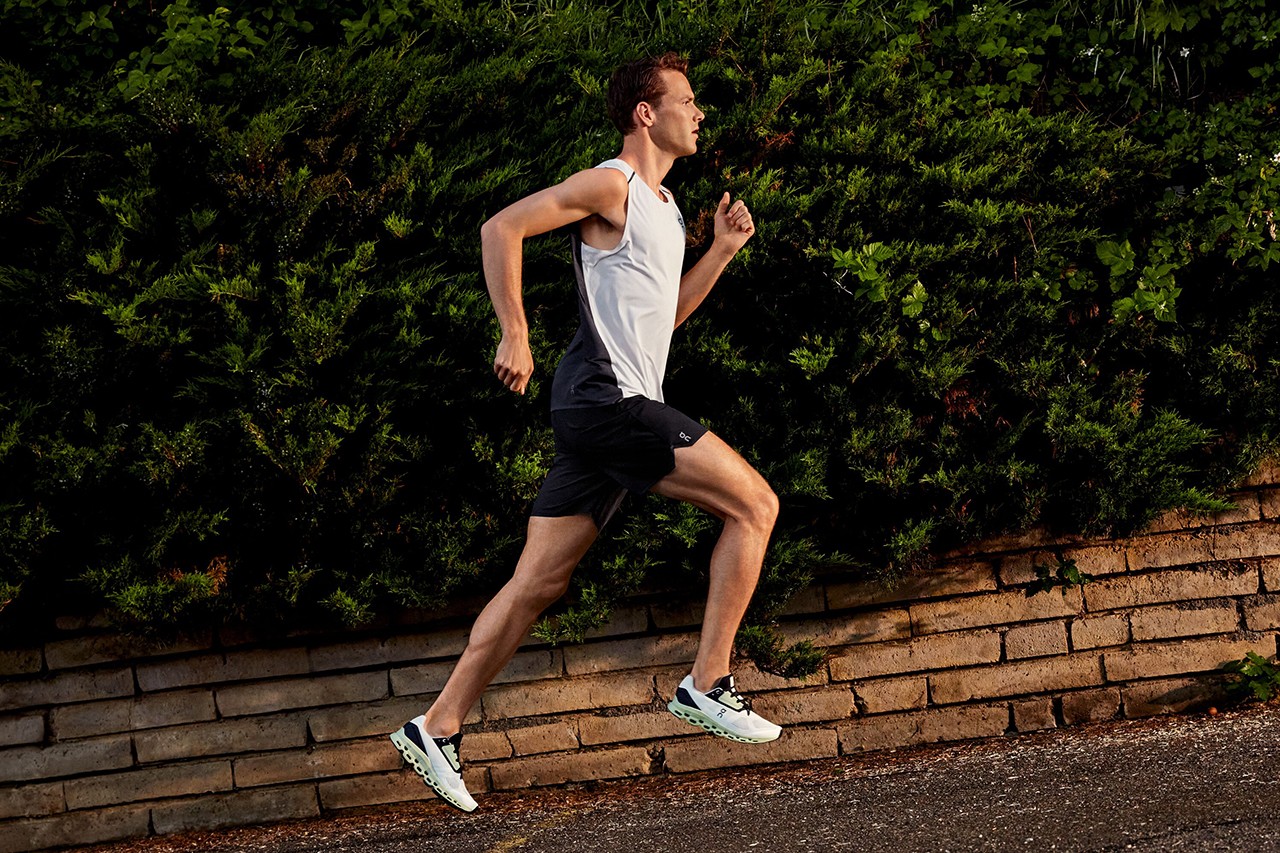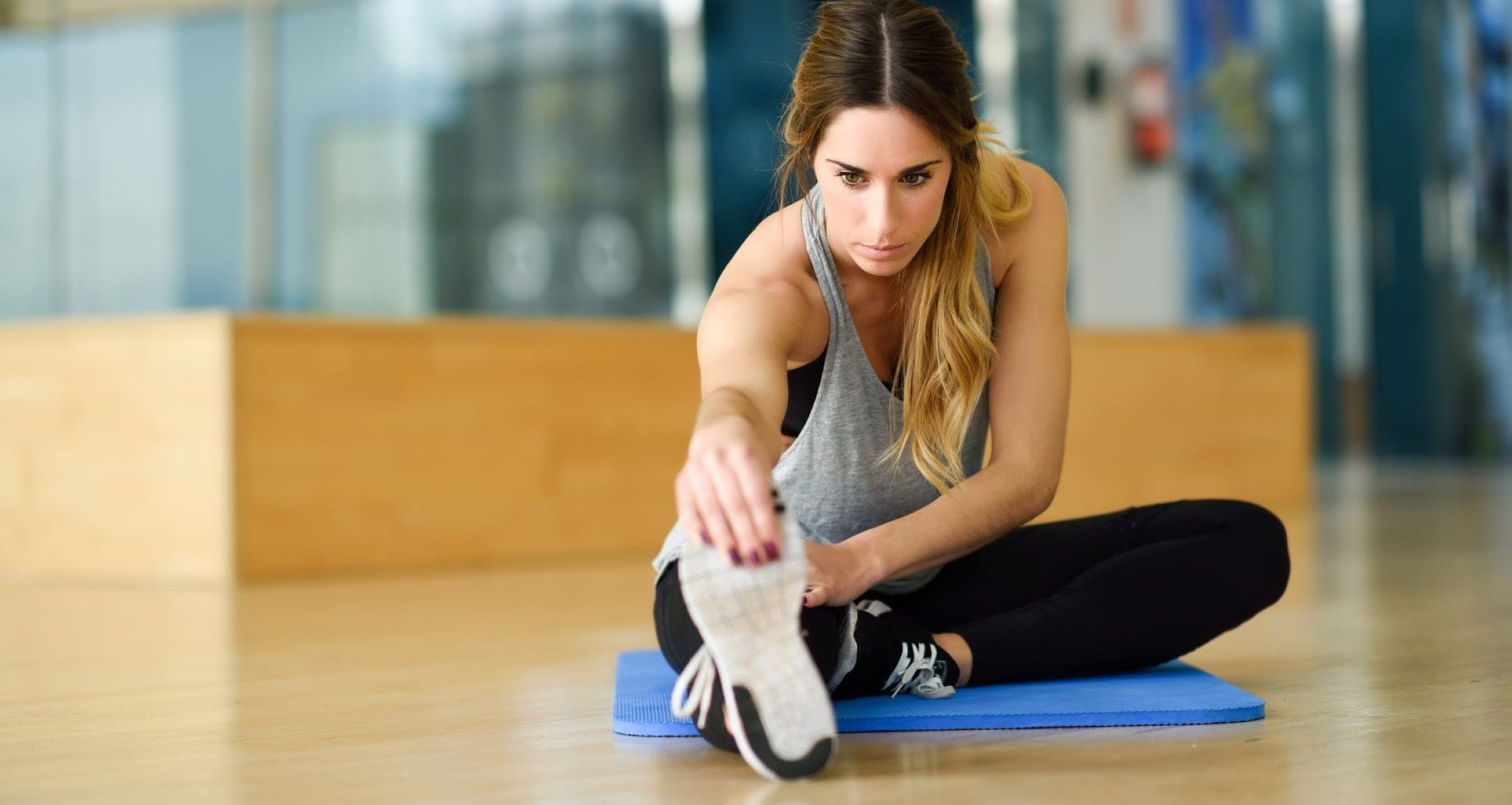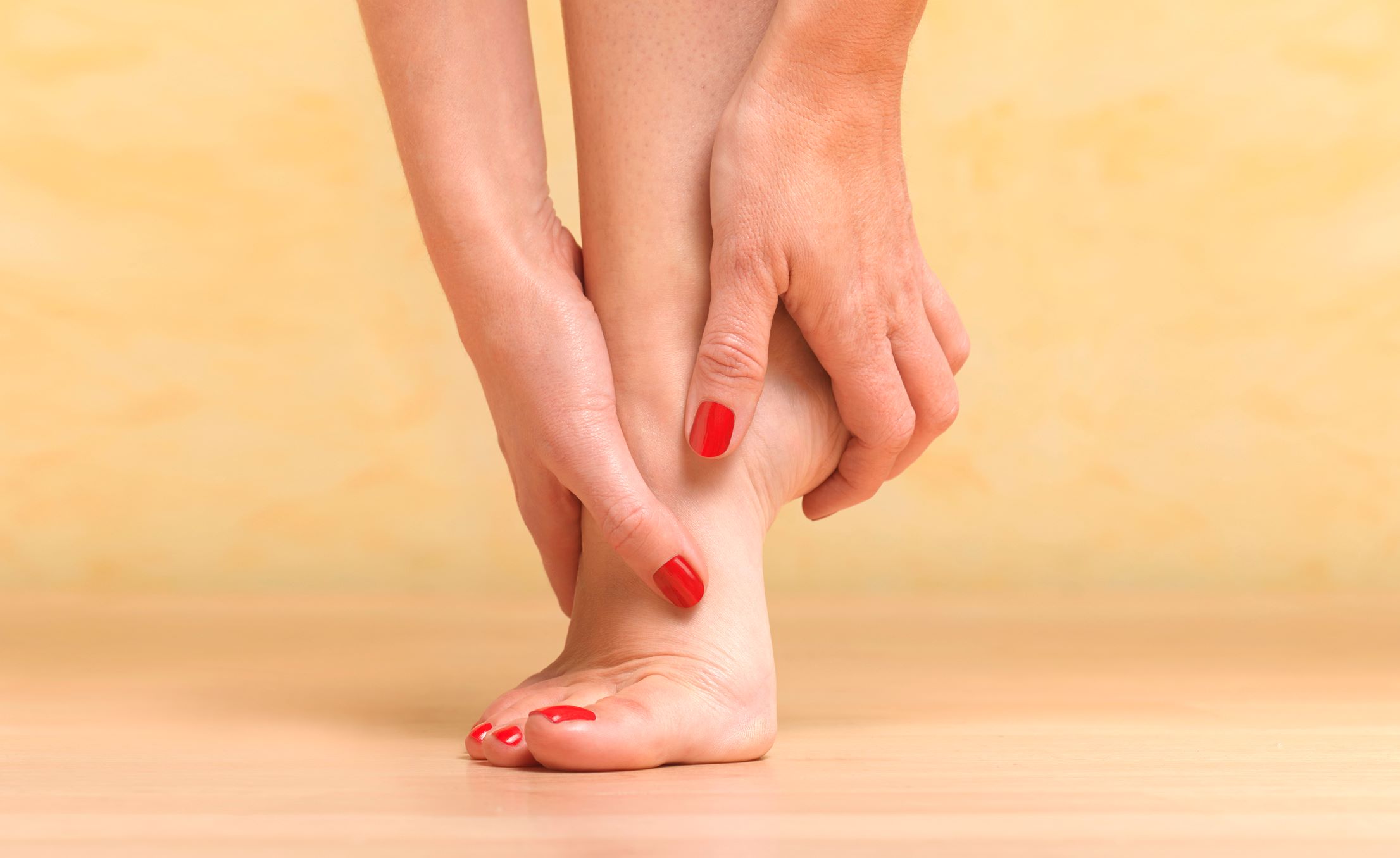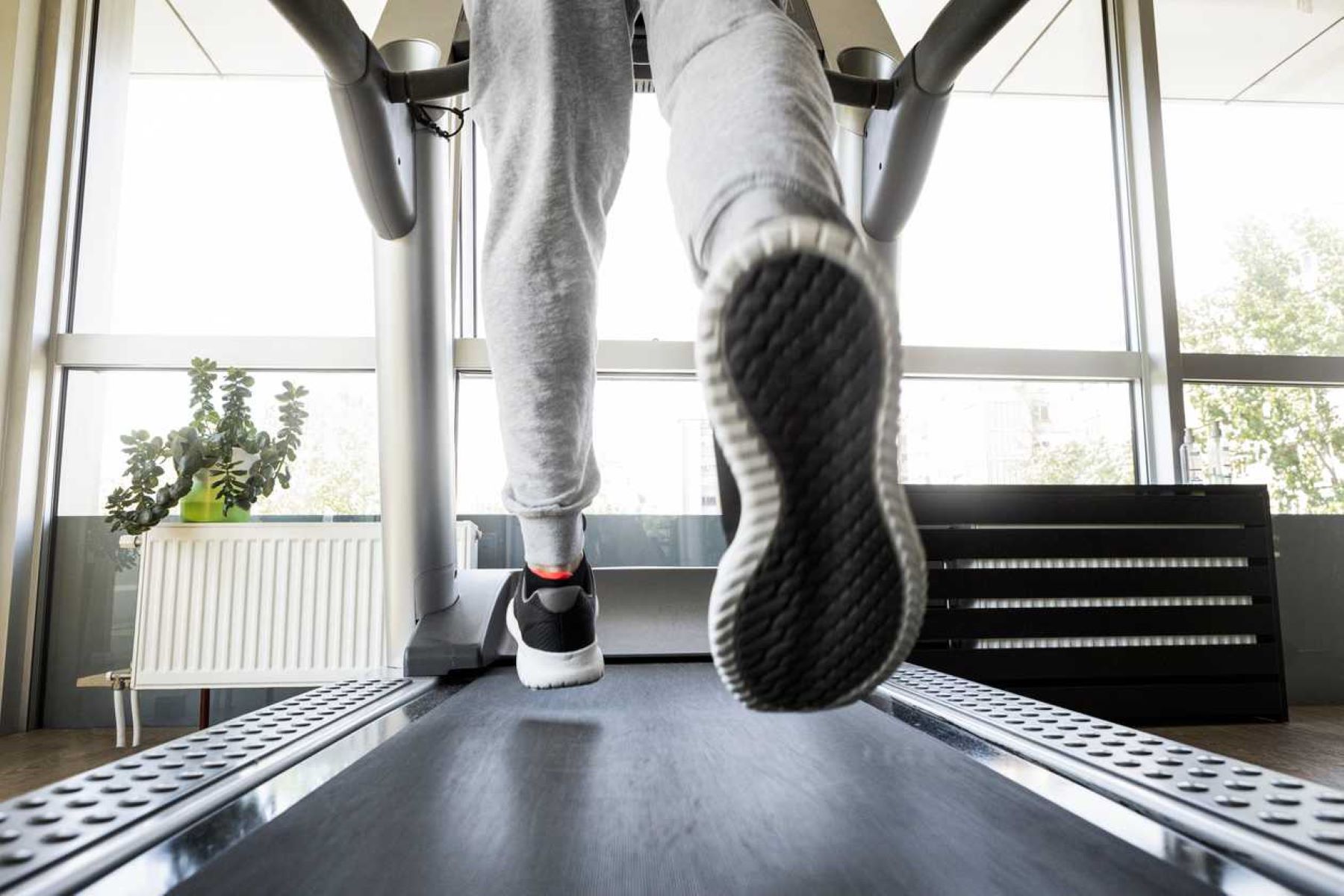Home>Misc>Featured>Why Do My Feet Hurt When I Walk On The Treadmill
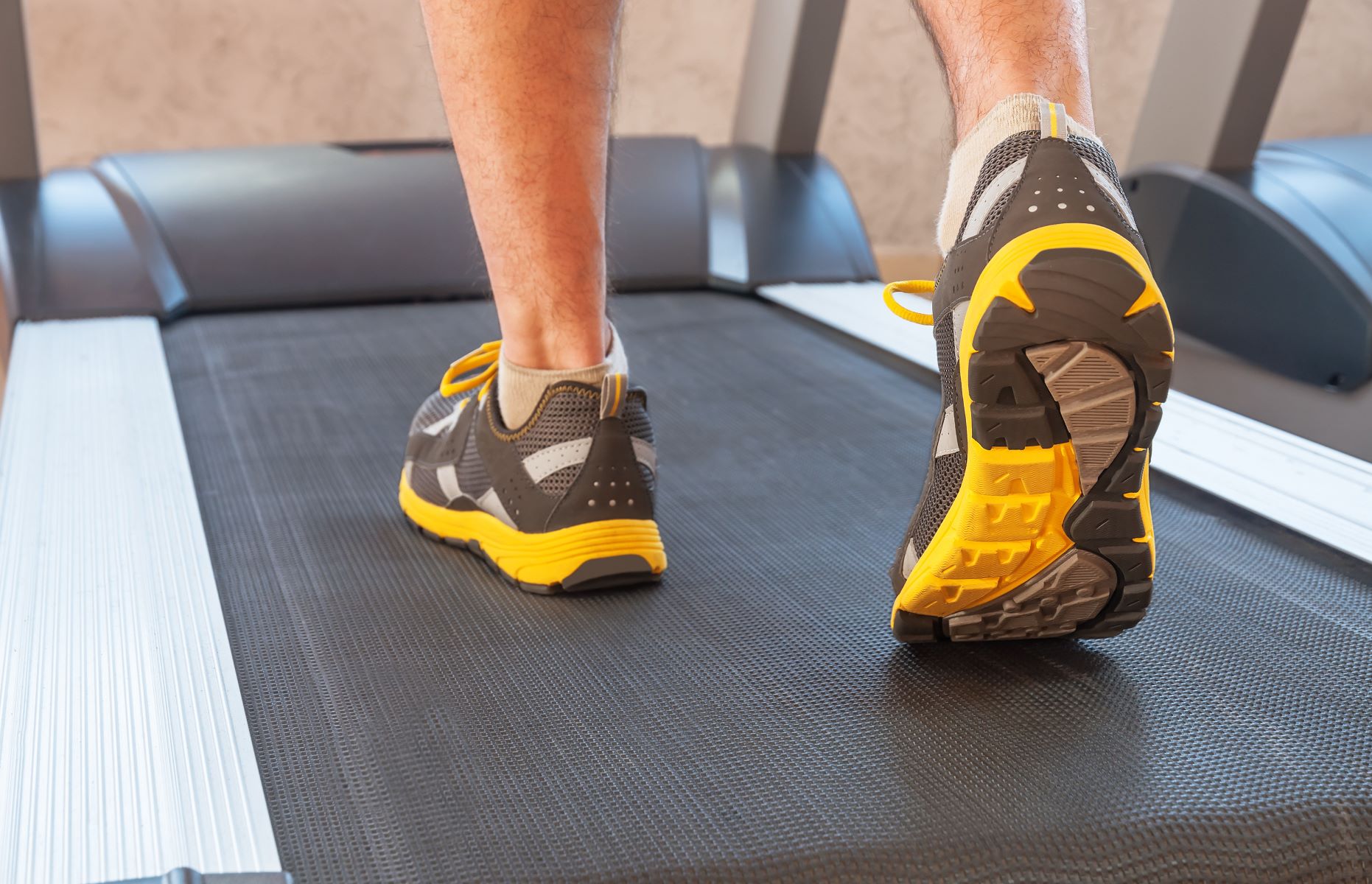

Featured
Why Do My Feet Hurt When I Walk On The Treadmill
Modified: January 2, 2024
Are you wondering why your feet hurt when you walk on the treadmill? Discover the featured reasons and find relief for your discomfort today!
Introduction
Walking on a treadmill is a popular form of exercise that allows individuals to stay active and maintain their fitness levels without the need for outdoor space. However, for some individuals, this seemingly simple activity can result in foot pain and discomfort. If you’ve ever wondered why your feet hurt when you walk on the treadmill, you’re not alone. In this article, we will explore the common causes of foot pain while using a treadmill and discuss preventive measures to help alleviate these issues.
Treadmill walking involves repetitive movements and places continuous stress on the feet. For individuals who are not accustomed to this type of exercise, or those who have underlying foot conditions, the impact can be especially challenging. It is essential to understand the mechanics of treadmill walking and take appropriate precautions to ensure a comfortable and pain-free workout experience.
The human foot is a complex structure that consists of numerous bones, ligaments, tendons, and muscles. These structures work together to support the body, absorb shock, and facilitate movement. When walking on a treadmill, the repetitive impact can put excessive strain on the feet, leading to various types of discomfort.
Foot pain on the treadmill can stem from several factors, including improper footwear, biomechanical issues, and poor walking technique. Understanding these factors is crucial to pinpoint the root cause of your foot discomfort and take appropriate measures to address it.
In the following sections, we will delve deeper into each of these factors, discussing their impact on foot pain while using a treadmill and offering practical solutions to minimize or prevent discomfort. By implementing these measures, you can continue enjoying the benefits of treadmill walking while keeping foot pain at bay.
Understanding the Mechanics of Treadmill Walking
Before delving into the causes of foot pain on the treadmill, it is important to understand the mechanics of treadmill walking. When walking on a treadmill, the body’s weight shifts from one foot to the other, mimicking the natural gait cycle. As the foot strikes the treadmill belt, it propels the body forward, working the muscles and joints of the feet and legs.
The repetitive nature of treadmill walking can lead to an accumulation of stress on the feet, causing discomfort and pain. One common issue is the impact force that is transmitted through the foot with each step. This force is greater on a treadmill compared to walking on a flat surface due to the belt’s movement. This increased impact can lead to overuse injuries and foot pain if proper precautions are not taken.
Additionally, the treadmill surface itself can play a role in foot pain. Some treadmills have a harder surface compared to outdoor terrain or cushioned running tracks. This can contribute to increased impact on the feet. It is important to consider the type of treadmill you are using and adjust your workout accordingly.
Another factor to consider is the speed and incline at which you are walking on the treadmill. The faster you walk or run, and the higher the incline, the greater the stress on your feet. These factors can result in increased pressure on certain areas of the feet, leading to discomfort or pain.
Understanding the mechanics of treadmill walking is crucial in identifying the potential causes of foot pain. By being aware of how the body moves and the impact it has on the feet, you can take the necessary steps to prevent or address any discomfort that may arise.
In the next sections, we will explore common causes of foot pain on the treadmill, such as improper footwear, biomechanical issues, and poor walking technique. By understanding these factors, you will be better equipped to make informed choices to minimize foot pain and enjoy a more comfortable treadmill workout.
Common Causes of Foot Pain on the Treadmill
Foot pain while walking on the treadmill can be attributed to various factors. Understanding these common causes can help identify the root of your discomfort and take appropriate measures to alleviate it. Let’s explore some of the most frequently encountered causes of foot pain on the treadmill:
- Improper Footwear: Wearing improper footwear is one of the leading causes of foot pain on the treadmill. Shoes that lack proper cushioning, support, or do not fit correctly can result in increased stress on the feet. This can lead to discomfort, such as arch pain, heel pain, or general foot fatigue. It is crucial to invest in well-fitting athletic shoes specifically designed for walking or running to provide adequate cushioning, stability, and shock absorption.
- Biomechanical Issues: Individual biomechanics play a significant role in foot pain on the treadmill. Issues such as overpronation (excessive inward rolling of the foot), supination (excessive outward rolling), or flat feet can result in improper distribution of forces during walking. This can lead to strain on certain areas of the feet, causing pain and discomfort. Understanding your own biomechanics and seeking professional advice, such as from a podiatrist or physical therapist, can help address these issues and provide appropriate solutions, such as orthotics or exercises.
- Poor Walking Technique: A poor walking technique on the treadmill can contribute to foot pain. Striking the ground with excessive force, taking uneven steps, or overstriding can put unnecessary stress on the feet. It is important to maintain good posture, engage core muscles, and focus on a smooth and controlled stride. Utilizing the treadmill’s handrails for support or leaning too forward or backward can also lead to foot discomfort. It is advisable to walk or run with a natural gait, allowing the feet to roll smoothly from heel to toe.
- Overuse and Increase in Intensity: Gradually increasing treadmill workout intensity is key to preventing foot pain. Rapidly increasing speed, incline, or duration without giving the feet enough time to adapt can result in overuse injuries. Conditions such as plantar fasciitis, Achilles tendonitis, or stress fractures can develop from excessive stress placed on the feet. It is important to listen to your body, take rest days, and gradually progress your workouts to allow your feet and muscles to adapt and become stronger.
By identifying and addressing these common causes of foot pain on the treadmill, you can mitigate discomfort and enjoy a more pleasant and pain-free exercise experience. In the next section, we will discuss the impact of improper footwear on foot pain and provide tips for selecting the right shoes for treadmill walking.
Improper Footwear and its Impact on Foot Pain
The type of footwear you choose can have a significant impact on foot pain while walking on the treadmill. Wearing improper shoes that lack proper cushioning, support, or do not fit correctly can contribute to discomfort and increase the risk of foot injuries. Let’s examine how improper footwear can affect foot pain and what you can do to mitigate these issues.
Lack of Cushioning: One of the primary functions of athletic shoes is to provide cushioning to absorb the shock and impact generated during walking or running. Insufficient cushioning can lead to increased stress on the feet, resulting in foot fatigue, arch pain, and even heel pain. Look for shoes that have adequate cushioning in the midsole to provide optimal shock absorption and reduce the strain on your feet.
Inadequate Support: Proper support is essential to maintain the natural alignment of the feet and prevent excessive pronation or supination. When the foot rolls too far inward or outward, it can cause strain on the ligaments, tendons, and muscles, leading to foot pain. Shoes with good arch support and stability features can help promote proper foot alignment and distribute the forces evenly, reducing the risk of discomfort.
Poor Fit: Ill-fitting shoes can cause a multitude of foot issues. Shoes that are too tight can constrict the feet, leading to blisters, calluses, and nerve compression. Shoes that are too loose can result in excessive movement within the shoe, causing friction and rubbing, which can lead to blisters and discomfort. It is crucial to choose shoes that fit properly, allowing room for the toes to wiggle and preventing any pressure points or discomfort.
Worn-Out Shoes: Over time, athletic shoes lose their cushioning and support, diminishing their ability to absorb shock effectively. Continuing to wear shoes that are worn out can lead to increased stress on the feet and exacerbate foot pain. It is recommended to replace your athletic shoes regularly, typically every 300-500 miles or every 6-12 months, depending on usage and personal factors.
Investing in the right footwear is paramount to preventing foot pain on the treadmill. When shopping for athletic shoes, consider visiting a specialty running or sports store where knowledgeable staff can assess your foot type, gait, and provide expert advice on the most suitable shoes for your needs. Trying on several pairs and testing them with a few walking or jogging steps can help ensure a proper fit and comfort.
In the next section, we will explore the role of biomechanics in treadmill-related foot pain and discuss how addressing these issues can alleviate discomfort.
The Role of Biomechanics in Treadmill-Related Foot Pain
Biomechanics refers to the study of how the body moves and the forces that act upon it during physical activity. The way our bodies are structured and the way we move can significantly impact foot pain while using a treadmill. Understanding the role of biomechanics is crucial in identifying and addressing the underlying causes of discomfort. Let’s delve into the role of biomechanics in treadmill-related foot pain and explore potential solutions.
Overpronation: Overpronation occurs when the foot rolls inward excessively during walking or running. This biomechanical issue can contribute to foot pain on the treadmill, as it places additional stress on the arches and can lead to instability, plantar fasciitis, or shin splints. Individuals with overpronation may benefit from shoes with added stability and motion control features, as well as custom orthotics to help correct foot alignment and reduce overpronation.
Supination: Supination, also known as underpronation, is the opposite of overpronation. It occurs when the foot rolls outward excessively during movement. Supination can result in limited shock absorption and force distribution, leading to increased stress on the feet. Cushioned and neutral shoes with additional flexibility can help individuals with supination in absorbing shock and providing more stability while walking on the treadmill.
Flat Feet: Flat feet, or fallen arches, is a condition where the arches of the feet have collapsed, resulting in the entire sole of the foot coming into contact with the ground. This lack of arch support can lead to overpronation and added strain on the feet. Individuals with flat feet may benefit from shoes with proper arch support and motion control features to help stabilize the feet and provide better alignment.
High Arches: High arches, on the other hand, refer to an excessive curvature of the arch of the foot. This biomechanical condition can lead to supination and decreased shock absorption. Individuals with high arches can benefit from shoes with additional cushioning and flexibility to help absorb impact and promote a more natural foot motion.
Seeking professional advice from a podiatrist or physical therapist can be beneficial in understanding your own biomechanical characteristics and identifying any abnormalities or imbalances that contribute to foot pain on the treadmill. They can conduct gait analysis, assess foot posture, and recommend appropriate interventions such as exercises, stretches, custom orthotics, or specialized footwear to address these biomechanical issues.
Incorporating strength and flexibility exercises targeted at the feet, ankles, and lower legs can also help improve overall biomechanics and reduce the risk of foot pain. These exercises can enhance stability, improve foot arch strength, and promote better alignment during treadmill walking.
By addressing the role of biomechanics in treadmill-related foot pain and implementing appropriate interventions, you can reduce discomfort and ensure a more comfortable and enjoyable workout experience. In the next section, we will discuss the importance of proper walking technique on the treadmill and the impact it can have on foot pain.
The Importance of Proper Walking Technique on the Treadmill
The way you walk on the treadmill plays a crucial role in preventing foot pain and ensuring a comfortable exercise experience. Proper walking technique not only reduces the strain on your feet but also promotes optimal muscle engagement and overall body alignment. Let’s delve into the importance of proper walking technique on the treadmill and how it can impact foot pain.
Foot Strike: The way your foot lands on the treadmill belt, known as foot strike, greatly affects the forces transmitted through your feet. It is important to strive for a midfoot or forefoot strike to distribute the impact evenly and allow for a smoother transition from heel to toe. Landing too heavily on the heel can result in excessive shock and strain on the feet, leading to discomfort and potential injuries.
Posture: Maintaining proper posture while walking on the treadmill is essential for reducing strain on the feet and promoting overall stability. Stand tall with your head aligned with your spine, shoulders relaxed, and core engaged. Avoid leaning too far forward or backward, as this can result in an uneven distribution of weight and increased stress on the feet. Maintaining a neutral spine and engaging your core muscles will help support your body and reduce unnecessary strain on your feet.
Stride Length: Stride length refers to the distance between each step you take on the treadmill. It is important to find a stride length that is comfortable and natural for your body. Striding too long can result in overstriding, which can lead to increased impact on the feet. Conversely, taking short, choppy steps may cause excessive strain on the calves and hamstrings. Aim for a stride that feels balanced and allows for a smooth, rhythmic gait.
Arm Swing: Coordinating your arm swing while walking on the treadmill can help improve your overall walking technique. Allow your arms to swing naturally, opposite to your legs, in a relaxed and controlled motion. This assists in maintaining balance, propelling your body forward, and promoting an efficient walking stride. Avoid crossing your arms in front of your body or allowing them to hang stiffly by your sides, as these can disrupt your natural walking rhythm.
Cadence: Cadence refers to the number of steps you take per minute. Aiming for a higher cadence, or step rate, can help reduce the load on your feet. Increasing your cadence can lead to shorter, quicker steps, distributing the forces more efficiently and reducing the impact on your feet. Increasing your cadence gradually can also help improve overall cardiovascular fitness and make your treadmill walking more efficient.
Taking the time to learn and practice proper walking technique on the treadmill can significantly reduce foot pain and discomfort. It allows for a more efficient transfer of forces and minimizes the risk of overuse injuries. Focus on maintaining good posture, a balanced stride, coordinated arm swing, and an appropriate cadence to optimize your walking technique and ensure a more enjoyable workout experience.
In the next section, we will explore preventive measures and tips to minimize foot pain on the treadmill and promote overall foot health.
Preventive Measures to Minimize Foot Pain on the Treadmill
Experiencing foot pain while walking on the treadmill can be discouraging and hinder your exercise routine. However, there are several preventive measures you can take to minimize foot pain and discomfort. By implementing these strategies, you can maintain the joy of treadmill workouts while ensuring the health and well-being of your feet. Let’s explore some preventive measures to alleviate foot pain on the treadmill:
- Choose Proper Footwear: Investing in proper athletic footwear is essential to prevent foot pain. Look for shoes that provide adequate cushioning, support, and a proper fit. Consider visiting a specialty shoe store to have your feet professionally assessed, and to receive guidance on the best shoe options for your foot type and exercise needs.
- Gradually Increase Intensity: Avoid going from zero to a hundred when it comes to treadmill workouts. Gradually increase the intensity of your workouts by incrementally adjusting the speed, incline, or duration. This gradual progression allows your feet and muscles to adapt and reduce the risk of overuse injuries.
- Warm-Up and Cool Down: Prior to starting your treadmill workout, it is crucial to warm up your feet and lower legs through dynamic stretching or light exercises. This helps increase blood flow and prepares your muscles for the upcoming exercise. Similarly, cooling down after your workout with gentle stretching can help alleviate any tension and reduce the chances of post-workout foot discomfort.
- Practice Foot Strengthening Exercises: Incorporating foot strengthening exercises into your routine can help improve foot stability, flexibility, and endurance. Exercises like toe curls, calf raises, and ankle rotations can target the foot muscles, enhancing their ability to support your body and reducing the risk of foot pain.
- Pay Attention to Your Body: Listen to your body and pay attention to any discomfort or pain you may experience during or after treadmill workouts. If you are experiencing prolonged or worsening foot pain, it may be a sign to modify your exercise routine or seek professional advice from a podiatrist or sports medicine specialist.
- Cross-Train: Mix up your exercise routine by incorporating other low-impact activities into your regimen. This allows your feet to experience different motions and reduces the repetitive stress placed on them during treadmill walking. Swimming, cycling, or strength training can be excellent alternatives that provide a break from constant treadmill use and help alleviate foot pain.
- Consider Orthotics or Inserts: Depending on your foot structure and any existing biomechanical issues, custom orthotics or shoe inserts may be beneficial. These devices can provide additional support, cushioning, and help correct any alignment imbalances that contribute to foot pain. Consult with a podiatrist or physical therapist to determine if orthotics or inserts are suitable for your needs.
By implementing these preventive measures, you can significantly reduce the risk of foot pain on the treadmill. Remember to listen to your body, choose appropriate footwear, gradually progress your workouts, and take care of your foot health through stretching and strengthening exercises. By prioritizing foot health, you can continue to enjoy the benefits of treadmill walking without the discomfort of foot pain.
In the next section, we will discuss when it is essential to seek medical attention for treadmill-related foot pain.
When to Seek Medical Attention for Treadmill-Related Foot Pain
Treadmill-related foot pain can range from minor discomfort to more severe and persistent issues. While many cases of foot pain can be alleviated through preventive measures and self-care, there are certain situations where it is important to seek medical attention. Recognizing when to seek professional help can lead to proper diagnosis, treatment, and prevention of further complications. Here are some indicators of when to consult a healthcare professional for treadmill-related foot pain:
- Severe or Intense Pain: If you experience severe or intense pain that persists, worsens, or interferes with your daily activities, it is recommended to seek medical attention. This could be a sign of a more serious foot injury or condition, such as a stress fracture, tendon tear, or ligament sprain.
- Swelling and Inflammation: Persistent swelling, redness, or inflammation in the foot or ankle could indicate an injury or an underlying condition, such as tendinitis or arthritis. These symptoms may require medical evaluation and appropriate treatment.
- Limited Range of Motion: If you notice a significant decrease in your foot and ankle’s range of motion, or if you have difficulty walking or bearing weight on the affected foot, it is advisable to consult a healthcare professional. This could indicate a more severe injury or condition that requires prompt attention.
- Recurring or Chronic Pain: If you experience recurrent episodes of foot pain on the treadmill, it may be a sign of an underlying issue that needs medical assessment. Chronic pain that lasts for an extended period, despite rest and self-care measures, should not be ignored and should be evaluated by a healthcare professional.
- Changes in Foot Appearance: If you notice any noticeable deformities, changes in foot shape, or visible abnormalities, such as lumps or bumps, it is important to have a healthcare professional examine your foot. These changes can be indicative of a more serious condition that requires medical attention.
- History of Foot Problems or Conditions: If you have a pre-existing foot condition, such as plantar fasciitis, bunions, or flat feet, and experience new or worsening symptoms while walking on the treadmill, it is advisable to consult a healthcare professional. They can provide guidance on managing your condition and modifying your exercise routine to minimize foot pain.
Seeking medical attention for treadmill-related foot pain is important to obtain an accurate diagnosis and appropriate treatment plan. A healthcare professional, such as a podiatrist or orthopedic specialist, can perform a thorough evaluation, order any necessary imaging tests, and provide personalized recommendations to address your specific foot pain concerns.
Remember, early intervention and proper treatment can greatly improve your recovery and prevent further complications. If you are unsure whether your foot pain warrants medical attention, it is always better to err on the side of caution and seek professional advice.
In the final section, we will conclude the article by summarizing the key points discussed and emphasizing the importance of maintaining foot health while walking on the treadmill.
Conclusion
Walking on a treadmill can be a fantastic way to stay active and maintain fitness levels, but foot pain can dampen the experience. By understanding the mechanics of treadmill walking, identifying common causes of foot pain, and implementing preventive measures, you can minimize discomfort and enjoy a more pleasant workout.
We explored the impact of improper footwear, biomechanics, and poor walking technique on foot pain. Choosing proper footwear, considering custom orthotics, and practicing good walking technique are crucial steps to alleviate foot pain. Gradually increasing intensity, incorporating stretching and strengthening exercises, and cross-training can also reduce the risk of overuse injuries.
It’s important to be mindful of your body and recognize when to seek medical attention. Severe or chronic pain, swelling, limited range of motion, recurring symptoms, and visible foot abnormalities should prompt a visit to a healthcare professional. Early intervention can prevent further complications and expedite recovery.
Foot health is a critical aspect of treadmill walking. By prioritizing the right shoes, good biomechanics, and proper walking technique, you can minimize foot pain, enhance performance, and promote long-term foot health.
Remember to listen to your body, respect your limits, and modify your workout as needed. Everyone’s feet are unique, and what works for one person may not work for another. It’s important to find the right combination of factors that suit your individual needs and preferences.
Maintaining foot health allows you to enjoy the numerous benefits of treadmill walking – improved cardiovascular fitness, weight management, and stress reduction – without the inconvenience of foot pain. Take care of your feet, and they will take you wherever you want to go on your fitness journey.
